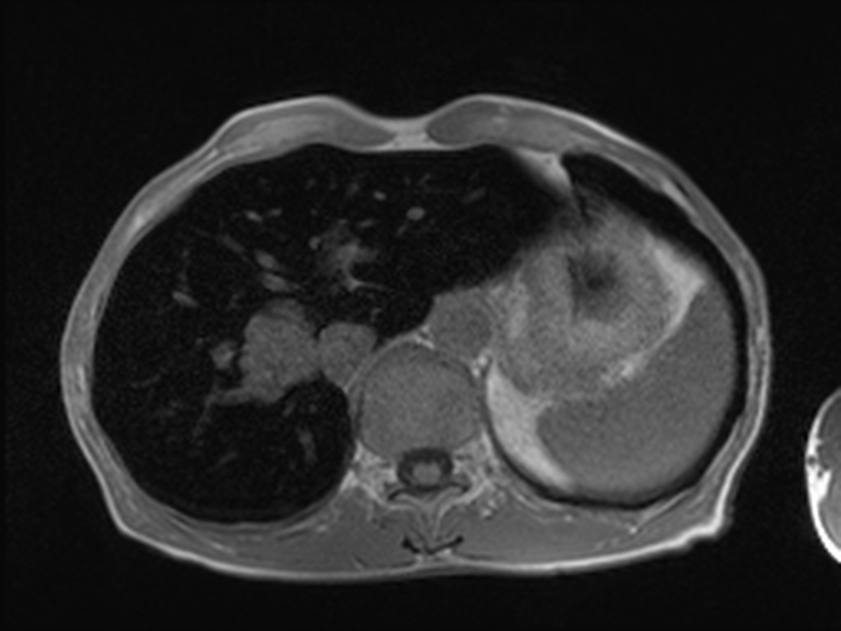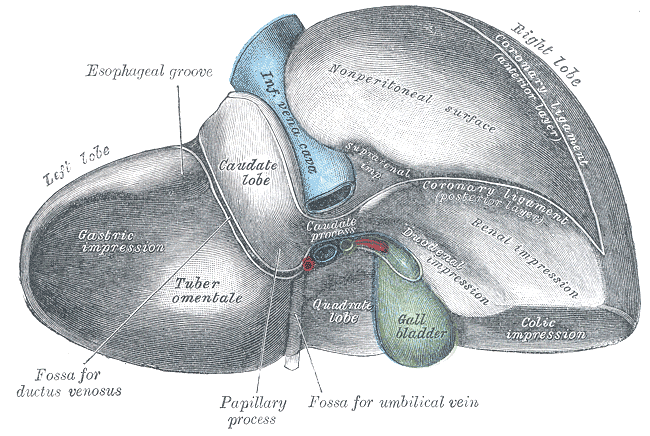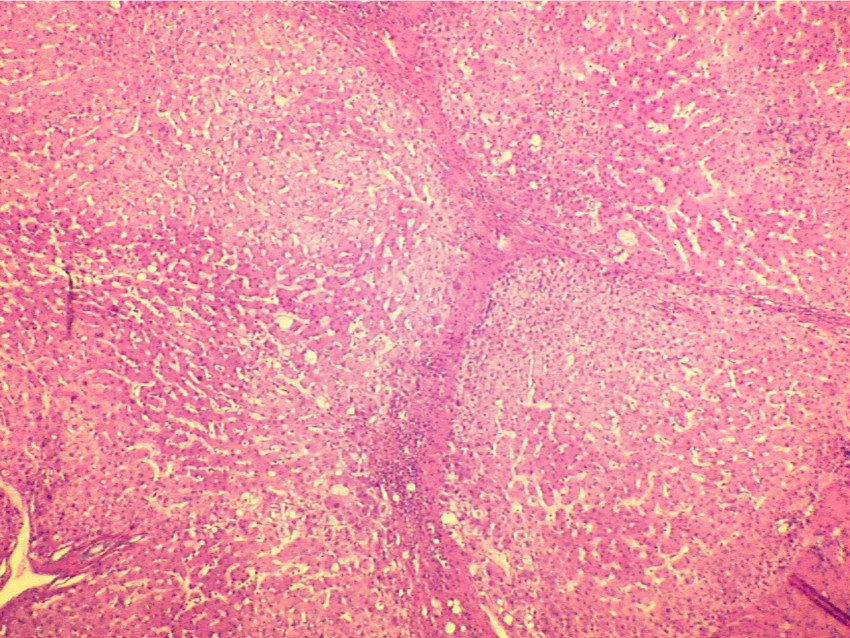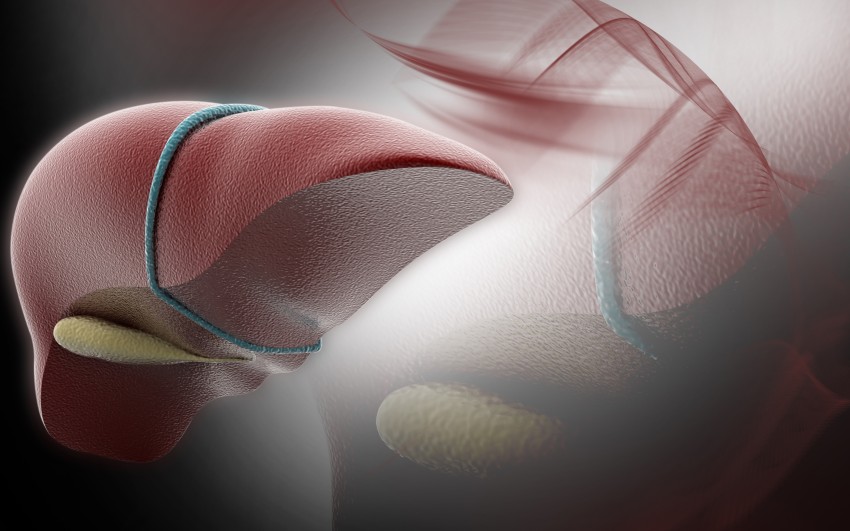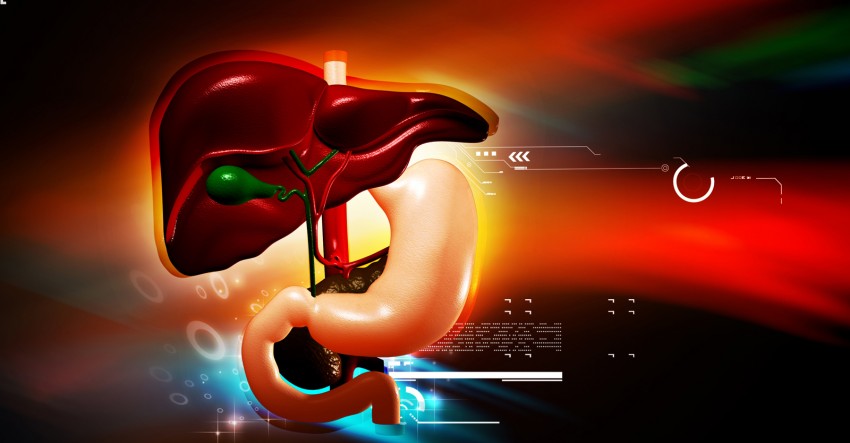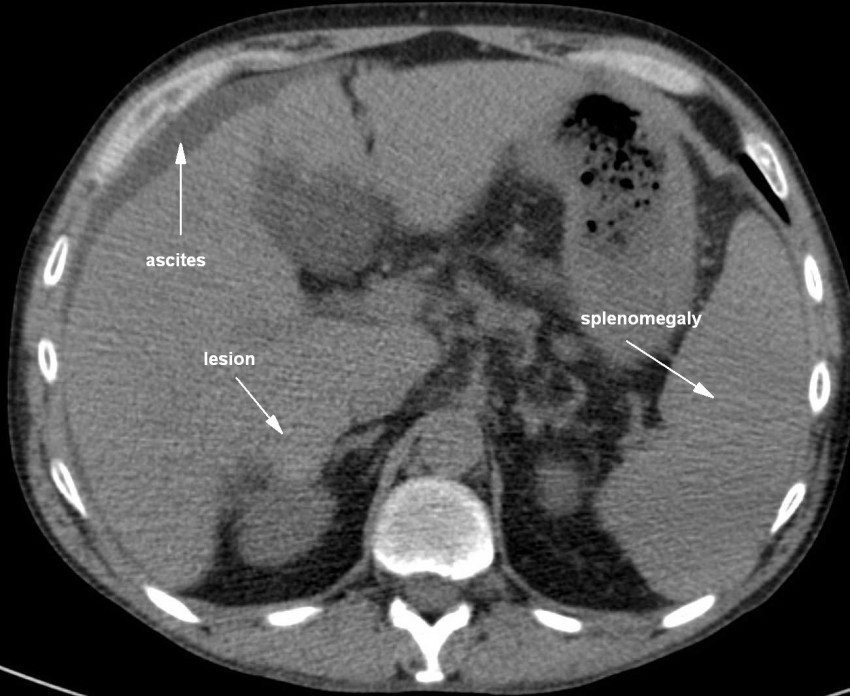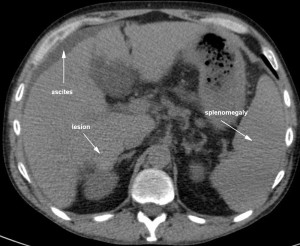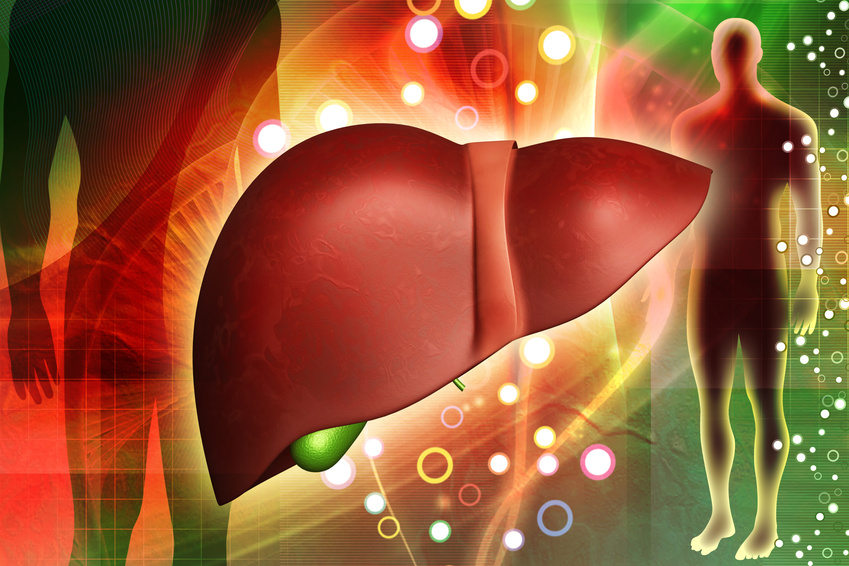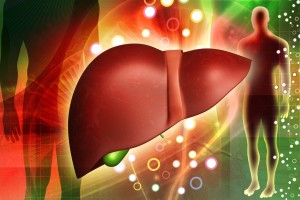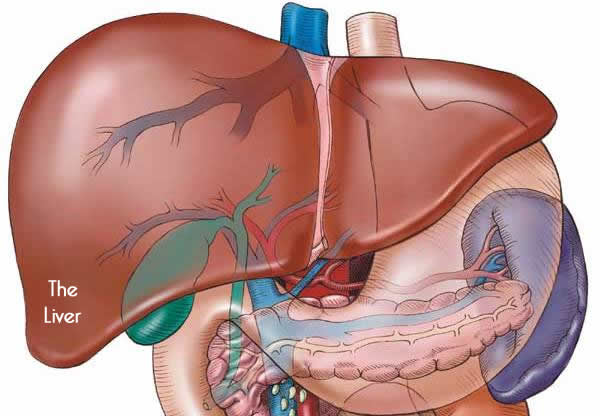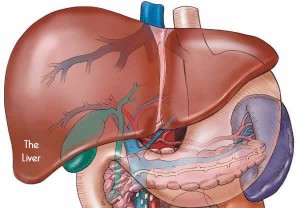Liver Health 11
HEMOCHROMATOSIS OF THE LIVER

Hemochromatosis is a genetic disorder where the body absorbs and stores too much of iron. This extra iron gets stored in all parts of the body especially the liver and leads to serious complications. The body absorbs about 10 percent of iron (about 1 – 2 grams per day) from food we take and is sufficient for the body. People with Hemochromatosis absorb more (4 – 5 grams leading to 15 – 40 grams per day) than the body needs leading over build up of iron and causing organ failures.
Symptoms for Hemochromatosis
There are no specific symptoms for this condition. Common symptoms of hemochroatosis are fatigue, pain in the abdomen and heart problems. These signs are noted in men between the age of 30 and 40 and above age 50 for women.
When the disease is not detected early, iron build up in the tissues cause serious complications such as
- Liver problems like cirrhosis, liver cancer, enlarged liver and liver failure
- Arthritis
- Diabetes
- Heart problems and heart failure
- Pigmentation and discolouration of skin
- Early onset of menopause
- Damage to pituitary and adrenal glands
- Impotence
- Gall bladder disease
- Depression
- Joint pains
- Loss of body hair (except scalp)
Genetic Cause for Hemochromatosis
Hemochromatosis is the result of a defect in the gene called HFE. HFE functions in regulating the iron absorption from food. The gene is present at birth but hemochromatosis develops only when both the parents have the defective gene. If it is from one parent, then the person is a carrier of the defective gene and does not develop hemochromatosis.
Adolescent and Neonatal Cause for Hemochromatosis
The cause for the adolescent and neonatal hemochromatosis is not known although it is not due to the HFE gene defect. The condition forms a fatal overload of iron and causes liver and heart diseases in both the cases.
Diagnosis for Hemochromatosis
If the levels are high in the following blood tests, test for confirming the presence of the HFE gene is done.
- Serum iron test – measures the level of iron concentration in blood
- Total iron binding capacity – measures the quantity of iron that the blood can carry
- Serum ferritin level – measures the level of ferritin protein containing iron
A liver biopsy confirms the presence of this disease. Excessive iron storage is found in liver damaged patients due to alcohol and hepatitis infection.
Treatment for Hemochromatosis
Treatment for hemochromatosis is safe and inexpensive. The best and effective treatment for hemochromatosis is Phlebotomy. It is a process where certain amount of blood is taken out from the body once or twice a week depending on the severity of iron over load. The treatment is followed for few months to a year. It helps reduce the iron level in the blood to normal and maintain the same. After this, maintenance treatment is given where a certain amount of blood is given every 2 to 4 months for life. The frequency of blood transfusion is based on the blood results every year.
Liked this article on Hemochromatosis Of The Liver and have something to say? Comment below and don’t forget to SHARE THIS ARTICLE!
ROLE OF GENES IN LIVER DISEASE
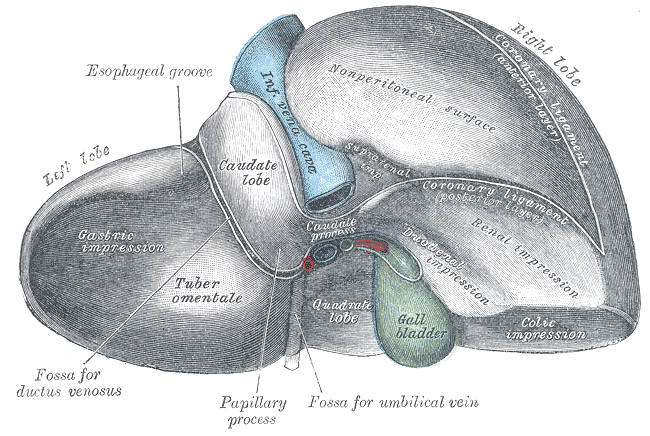
A liver disease may be caused either due to genetic or metabolic defects. The defects may arise due to an enzyme or transport protein that alters the system and causes problems to the liver. This article is going to discuss some of the genetic diseases of the liver and the role of genes in causing early liver diseases.
Genetic Haemochromatosis
Haemochromatosis is a recessive disease where excess iron is absorbed in the body and the deposits are collected in organs. This disease is seen in people having iron overload disorders. Analysis of Human haemochromatosis protein (HFE) would confirm Haemochromatosis.
Alpha-1 Antitrypsin Deficiency
An important liver protein called alpha-1 antitrypsin does not get produced or gets produced in very lower levels in the blood. Though people with this disease have this protein, it gets accumulated in the liver instead of going into the bloodstream. It has been found that this disease is due to the mutations in the SERPINA1 gene.
Cystic Fibrosis Liver Disease (CFLD)
Cystic fibrosis is caused due to the failure in secretion by the biliary epithelium thereby causing an absent or dysfunctional CFTR protein. CFTR protein’s main role is to participate in the first stage of ductal secretion. Its absence initiates progressive periportal fibrosis. There is also a theory that existence of modifier genes and three more genes, alpha-1-antitrypsin, transforming growth factor, and mannose binding lectins are also involved in CFLD.
Wilson Disease
Wilson disease is also an inherited genetic disorder where copper gets accumulated in the lungs and other vital organs. Copper is required for the nerves, bones and skin melanin. It is absorbed from the food and excess copper is excreted through bile (secreted by liver). In case of Wilson’s disease, copper is not excreted properly. So it gets accumulated in liver and other vital organs. When diagnosed in early stage, this disease can be treated. This disease is caused by the genetic mutation of ATP7B gene. When the activity of this gene is reduced, it leads to copper accumulation.
Type 1 Tyrosenmia
Tyrosenemia is a genetically inborn disorder where there is an error in the metabolism, where the body is incapable of breaking down the amino acid called tyrosine. It leads to sever liver disease in childhood. This disease is due to the altered activity of fumarylacetoacetate hydrolase.
Glycogen Storage Disease
This is a genetic disease. It can also be an acquired disease. Glucose is the large energy source of the body. Glucose is stored as glycogen in the liver. It is released into the body with the help of enzymes. In case of genetic disorder, there is a defect in the processing of glycogen synthesis or breakdown within muscles, liver and other cell types. Thus, glycogen gets accumulated in the liver causing failure of liver.
Argininosuccinate Lyase Deficiency and Citrin Deficiency
Urea cycle is one in which a series of reactions inside the body converts nitrogen into ammonia and aspartate into urea. These 2 diseases are caused because of errors in the Urea cycle.
There are several other diseases like Alstrom syndrome (rare disorder that affects many organs of the body. This is caused due to the defects in the function or structure of a hair like structure called cilia that is found in all types of cells in the body), Cholesteryl Ester storage disease, Hereditary Fructose intolerance.
The genetic liver diseases are found in a number of cases with different outcome, penetrance and age group. The role of genes in such cases has to be studied further with the help and collaboration of clinical symptoms and laboratory analysis.
Liked this article on Role Of Genes In Liver Disease and have something to say? Comment below and don’t forget to SHARE THIS ARTICLE!
DRUG INDUCED LIVER INJURY

Have you ever taken a closer look at the pain killers or the drugs that have been prescribed to you by your doctor, to either cure some illness or to relieve you of your pain or to keep some abnormalities under control?
Although not all of these drugs come with a warning sign, some of them do display a message on the bottle, especially in pediatric medicines, that over dosage or too much usage may damage kidneys or liver. I bet you would have heard some doctors say that forgetfulness or excessive urination or something unique accompanies the daily recommended dosage of drugs that help you keep diabetes under control. Every drug you take has some side effects. Let us read a few important concepts regarding liver injury through prescribed drugs.
How does this happen?
Liver injury due to drugs can be classified under three categories based on dosage (idiosyncratic toxicity), inherited genes and allergic reactions. If a person continues to take a drug beyond recommended levels, for example too much paracetamol, if a person has inherited certain genes which makes their body intolerant to specific drugs such as penicillin or if a person gets allergic to some prescribed drug due to the movement in the immune system induced by the same, then liver injury falls under those respective categories mentioned above.
Some well known drugs known to cause liver injury
Paracetamols And Pain Killers – Most paracetamols and some pain killers can cause damage to liver and kidneys when taken over a long period of time. Widely known examples are brufen, crocin, nimulid/nimuslide and so on. These can be taken in moderation and only during a pressing need. In other words if you take them every time you suspect a fever or headache then possibility of liver damage could be high.
Statins – Are you suffering from high cholesterol and tri-glycerides? In that case your doctor must have prescribed statin to keep your cholesterol levels low. Most doctors believe statin to be quite safe to the liver. However, studies have proved that prolonged usage of statin may lead to liver damage.
The good news however is once you stop taking statin there is a high chance that liver damages can be reversed. Hence it is better to take statin for such time that you bring cholesterol under control which includes changes in your diet and then discuss with your doctor and refrain from taking it.
Antibiotics – Certain antibiotics taken to help in minimizing some illnesses such as Nitrofurantoin which is used to treat urinary tract infections, Augmentin for treatment of influenza or other viral fever are known to cause hepatitis in some cases over prolonged usage. Hence it is better to ensure that these drugs are taken only under the guidance of a doctor and completion of the drug course is mandatory.
Vitamins – In rare cases doctor may prescribe synthetically created vitamins for betterment of the body. When these vitamins are taken for longer periods of time, they may lead to toxicity. The blood may be filled with these artificially created vitamins and the liver enzymes may be polluted and in turn injure the liver. Well known examples are Vitamin A and D tablets produced artificially.
Liked this article on Drug Induced Liver Injury and have something to say? Comment below and don’t forget to SHARE THIS ARTICLE!
STAGES OF LIVER DAMAGE
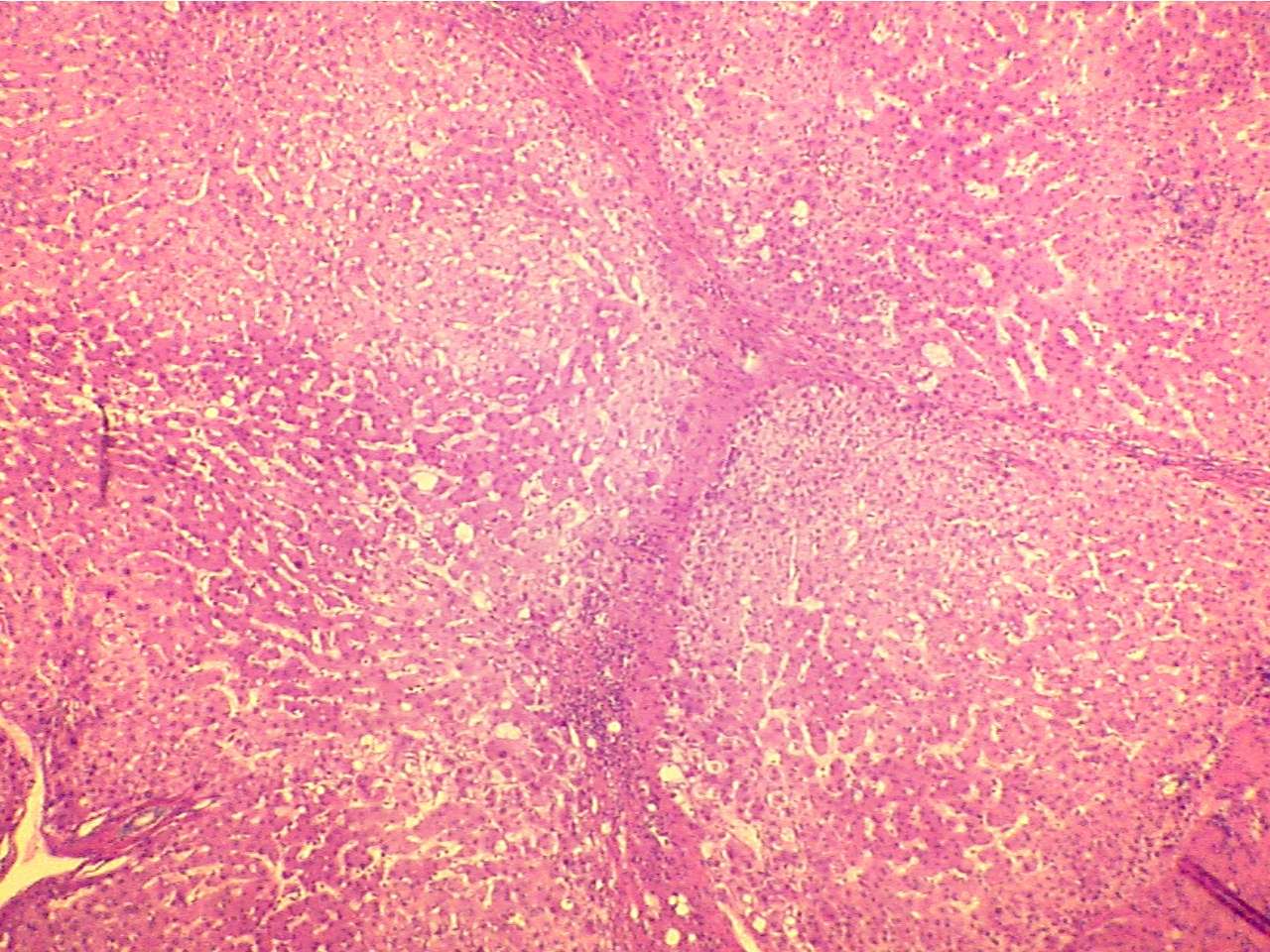
Damage to the liver is progressive in nature and simply does not happen overnight. While there is wide range of causes of liver failure and is diagnosed at different stages, the damage progresses in four stages. Liver damage is the result of alcohol abuse, fatty liver, Hepatitis virus or certain drugs. A healthy liver helps in purifying blood, fights infection; helps digest food and stores proteins and energy. The liver has the ability to regenerate itself by repairing the damaged tissues.
Stage 1: Initial Stage
Irrespective of the cause for liver damage, inflammation is the first sign that the liver is under attack. Inflammation is a sign that the liver is trying to fight off the infection. The liver becomes tender and swollen. If the inflammation is treated, progression to the second stage can be avoided however the inflammation hardly shows any signs on the outside making this stage hard to diagnose.
Stage 2: Fibrosis
In this stage, due to untreated liver the tissues are damaged thus forming the scar tissue. Scar tissue restricts blood flow and hinders proper liver function. The replacement of healthy liver tissues is Fibrosis. Often the rest of the healthy tissues will have to do the work of the tissue replaced by the scar tissues. Liver damage is normally detected in this or the third stage. At this stage, the liver damage can be treated and further damage can be prevented.
Stage 3: Cirrhosis
Cirrhosis is the chronic stage of the liver disease where the damage is irreversible and leads to the liver not able to perform its function. The liver cannot heal itself anymore. Due to this, other health complications also occur and treatment for these complications as well as the liver damage is required. One of the health complications is Liver cancer. Most people are diagnosed with liver problem at this stage. Some of the visible signs are bleeding, bruising, jaundice, and water retention in legs or abdomen, itching of skin, development of insulin resistance and type – 2 diabetes and mental confusion.
Stage 4: Liver Failure
Liver failure is a life threatening condition where the liver is either losing all its functions or has already lost them. The initial symptoms are fatigue, diarrhea, loss of appetite and nausea. As these symptoms are signs of many other diseases, it is difficult to pin down as liver failure. With the progression of liver failure, the patient becomes more sleepy, disoriented and confused. The patient requires immediate medical attention as there is risk of coma and death. The doctor will try to save the healthy part of the liver and if that is not possible, the patient is left with no option other than liver transplant. In rare cases, liver failure can occur with 48 hours and is called chronic liver failure. It is usually due to medicine overdose or poisoning.
Cirrhosis, Liver cancer and Liver failure are life threatening conditions leaving the patient with few treatment options. Diagnosing liver damage at the earlier stages helps in treating and reviving the liver. Talk to your doctor if you think you are at risk or have been exposed to hepatitis prone regions which may require vaccinations.
Liked this article on Stages Of Liver Damage and have something to say? Comment below and don’t forget to SHARE THIS ARTICLE!
LIVER REGENERATION AND LIVER FAILURE

Liver is the largest of internal organs and is situated under the ribs on the right side of the chest. It plays a vital role by producing proteins, storing nutrients, removing harmful substances from the blood and in clotting of the blood. It also helps in breaking down, processing and absorbing of cholesterol and iron.
Liver Regeneration
The liver regenerates in two ways: one where it replaces the tissues that are damaged due to the contact of harmful substances and the other where, the rest of the liver does the work of the damaged part until the injured tissues are repaired. Mostly, liver failure happens over a period of time but in few acute cases, liver failure happens with 48 hours.
Causes of Liver Failure
Liver disease can be genetic and can often be due to the consumption of certain types of drugs and sometimes by alcohol. It also occurs when infected with Hepatitis A, B, C, D and E. Other than this, liver problem can also be due to Jaundice, presence of too much iron (Hemochromatosis, a genetic condition), Cirrhosis, and fatty liver due to obesity and by Epstein virus.
Signs of Liver Problem or Failure
Some signs of liver problems are
- Tenderness around the area of the liver
- Swollen abdomen
- Feeling of weakness or fatigue
- Weight loss
- Nausea
Tests Conducted
Your doctor when suspects a liver problem, can order for tests like blood tests, CT, MRI, Endoscopic Retrograde Cholangiopancreatography (ERCP) and magnetic Resonance Cholangiopancreatography (MRCP). The tests may vary based on the signs and symptoms.
Diet
The patient can follow a low fat, large carbohydrate diet once diagnosed with liver problem. They will have to reduce the consumption of salt and the intake of protein as advised by the doctor. Vitamin B complex is usually prescribed.
Prevention
Alcohol abuse is the most common reason for liver failure. Prevention or consumption in moderation helps in minimizing the risk. Healthy lifestyle and weight control helps in preventing fatty liver disease.
Prevention of acquiring Hepatitis can be achieved by maintaining proper hygiene and not exposing oneself to Hepatitis prone regions.
Cirrhosis which is the final stage of the many types of liver problem can be permanent leaving the liver to not perform properly and eventually liver failure. Patients with Cirrhosis will have to stay away from alcohol to prevent further damage. When there is a liver problem, common signs like tiredness and weight loss may always not point towards the liver.
It is important to visit the doctor if vomiting and fever persists. However, with Cirrhosis, vomiting blood, rectal bleeding, and mental confusion can occur and requires immediate medical attention.
In case of liver failure where treatments have already been administered, doctors try to save part of the liver which is still working. If this is not possible then the patient will need to have a liver transplant. Liver transplants these days have high success rates. To maintain healthy liver, alcohol prevention and leading a healthy lifestyle is the key.
Liked this article on Liver Regeneration And Liver Failure and have something to say? Comment below and don’t forget to SHARE THIS ARTICLE!
PREVENTION OF LIVER PROBLEM

Do you love Sweets? Do you love to eat packaged food and diet drinks? Are you an alcoholic? Are you obese? Are you a health freak taking Vitamin supplements? Do you love decorating your body with Tattoos? Do you take anti-depressants? Do you use lot of cleaning supplies to keep your home clean? Do you use Air fresheners?
If your answer is “YES” to at least one the above, then you are taking a step towards Liver problem…
Now, your question would be “What’s wrong with taking Vitamin Supplement?” or “Taking anti-depressant?” or “What’s wrong with Air fresheners?”
Let’s get into detail to understand more about it.
The Liver is one of the most essential organs for digesting food and getting rid of toxic substances from our body. This means that it will be the most affected too because all toxins in our body finally end up there before getting out of our system!
Let us discuss about some of the common things in our life that causes liver problems and the Prevention methods:
- Alcoholic Liver Disease
Prevention
Always drink alcohol in moderation. Heavy drinking leads to liver failure.
- Non-Alcoholic Fatty Liver Disease
Obesity can cause Non-alcoholic fatty liver disease because fat gets built up on the liver and swells up the liver.
Prevention
Avoid sedentary lifestyle. Eat well and exercise.
Use less processed sugar
Avoid packaged food item, diet drinks and food items containing MSG.
Other Causes
Injecting drugs using unsterile needles
Prevention: Don’t share needles to inject any kind of drugs. Even unprotected sex causes viral infections which may be any kind of Hepatitis virus. It’s better to get vaccinated for hepatitis.
Unsterile Tattoos
Prevention: If you really want to get tattooed, then select a place that follows all safety standards and is clean.
High doses of Vitamin A
Prevention: Vitamin A is very good for the health and wellbeing but when taken in higher doses can cause damage to the liver. Please consult the doctor before taking any supplements
Antidepressants
Prevention: Though it is rare, antidepressants sometimes cause liver damage. So, talk to your doctor before taking them.
Over-The-Counter/Nonprescription Drugs
Prevention: Take prescribed/nonprescription drugs only when required. Alcohol and medication should never be taken together.
Air-fresheners
Prevention: Chemicals present in Air fresheners and moth balls cause severe liver damage. Use natural spices and ingredients to add fragrance to your rooms instead of readymade air fresheners.
Cleaning Supplies
Prevention: Most of the Home Cleaning products contain Ammonia that causes liver damage. Use common household items like vinegar and baking soda instead of the toxic cleaning products to keep your home clean.
Flame Retardants
Prevention: Flame retardants are those used in mattresses. They cause liver toxicity. While buying mattresses, make sure they don’t use polybrominated diphenyl ethers.
“An ounce of prevention is worth a pound of cure” – Benjamin Franklin
Prevention of liver diseases would be your first step towards a healthy life.
Liked this article on Prevention Of Liver Problem and have something to say? Comment below and don’t forget to SHARE THIS ARTICLE!
DIET FOR A HEALTHY LIVER
Our Modern Lifestyle, complete with air pollution, food additives, and high amount of stress ensure that the liver has plenty to do. A mere three pounds liver works hard for you everyday than you could imagine, such as converting the food rich in carbohydrates, fats and proteins into energy, detoxify blood as so on and thus in other words known as a “Gatekeeper” of your body.
Being the second largest organ in the body, it is least cared for till something really goes wrong. It performs N number of functions in the body; you may not be aware of and keeps you away from many nasty health diseases.
Strengthening our liver is one of the ways to boost energy, balance weight and for overall strengthen health.
One of the best we can do is by having a health plan based diet as it is rich in antioxidants, natural cleansing agents like fiber and water and contains non – acidic proteins that are friendlier to our body than the animal sources. Here are few healthy foods recommended for a healthy liver.
- WALNUTS – It is high in glutathione and omega 3 fatty acids, which helps support our lives through the cleansing process.
- TURMERIC – It is used majorly as a spice but it is known to help our bodies digest fats and stimulate the production of bile. It can also act as a natural detox for the liver.
- LEMONS – All citrus fruits like lemons are full of Vitamin C, but lemons also help our body cleanse out toxic materials and aids digestion process.
- AVOCADOS – Adding more avocados in your diet, helps your body to produce a type of antioxidants called glutathione, which is needed for our liver to filter out harmful materials.
- GREEN TEA – This tea contains a lot of plant antioxidants known as catechins, which is known to improve the functions of the liver.
- LEAFY GREENS – Leafy greens like spinach and lettuce have the ability to neutralize metals, chemicals and pesticides that maybe in our food, and act as a protective mechanism for the liver.
- BEETS – It is high in plant flavonoids, which will improve the overall function of the liver.
- GRAPEFRUIT -Either eating or drinking grapefruit juice helps flush out toxins and carcinogens. It is also high in Vitamin C and antioxidants.
- GARLIC- It helps to activate enzymes that can flush out toxins from liver. It has a high amount of allicin and selenium, two natural compounds heeds in liver cleansing.
- APPLES – They are rich in pectin, which is a soluble fiber which helps to remove toxins and cholesterol from the blood, which helps the liver. They are also rich in malic acid a natural cleansing nutrients which removes toxins.
- LENTILS They are rich in fiber which assists in cleansing process and are a natural source of plant based protein. Too much protein is not good for liver but lentil provides the right amount of protein for the body, which is not harmful and is the easiest legume to digest.
Liked this article on Diet For A Healthy Liver and have something to say? Comment below and don’t forget to SHARE THIS ARTICLE!
CIRRHOSIS OF THE LIVER
The liver which is the largest of the internal organs, plays a major role by producing the proteins required for the body, clotting of the blood, storing the nutrients and sending nutrients to the bloodstream, producing bile which is required for digesting food, storing the sugar, and eliminating harmful substances from the blood. In this process, the liver comes in contact with various harmful substances which scar the liver.
Cirrhosis
Cirrhosis is the final stage of any type of liver damage and happens over a long period of time. The liver tissue is damaged and becomes scarred. The scar tissue cannot perform its functions thereby restricting the flow of blood and reduce the production of proteins, glucose and cholesterol.
Mostly, Cirrhosis is the result of Hepatitis C, alcohol and fatty liver. Once Cirrhosis occurs, it cannot be reversed and more and more tissues get scarred eventually leading to liver failure. Other complications are kidney failure, liver cancer, insulin resistance, diabetes, gallstones, esophageal varices (the bile which cannot pass through the liver is backed up to the esophagus), edema and enlarged spleen.
Though it is fatal, further damage to the liver tissues can be avoided if detected early.
Cause of Cirrhosis
The liver can repair its damaged tissues but with long term exposure of harmful substances like Hepatitis virus and alcohol, Cirrhosis happens. It shrinks and hardens the liver tissue restricting the normal liver function.
Cirrhosis Due to Alcohol
Cirrhosis by alcohol happens when a woman takes more than 2 drinks a day and when a man takes more than three per day for more than 10 years. It however is different for each and every individual.
Cirrhosis Due to Fatty Liver
Cirrhosis due to fatty liver is due to the buildup of fat in the liver. The fat buildup can be in people who may be obese, diabetes, high BP, repeated heart problems and metabolic syndrome which is associated with the size of the person.
Cirrhosis Due to Genes
Cirrhosis can also be genetic, where the person is affected with any of the diseases such as the Wilson’s disease, galactosemia, hemochromatosis, Alpha- 1 antitrysin deficiency and other glycogen storage issues.
Symptoms of Cirrhosis
The symptoms of Cirrhosis are jaundice, loss of appetite, weight loss, weakness, itchiness, nose bleeding, mental confusion, swelling of the abdomen, swelling of the legs, impotence and gynecomastia where breast development occurs in men.
The doctor looks for signs and symptoms and orders for appropriate tests. The tests which can detect Cirrhosis are family history, blood count test, albumin test (shows the rate at which the blood clots), liver function tests, liver biopsy, MRI of the abdomen area, Scan of the liver, CT of the abdomen and alpha fetoprotein which detects the presence of liver cancer.
Cirrhosis when detected can be treated based on its progress. Treatments are based on the extent of liver damage. Surgery is suggested to eliminate the damaged liver tissue and saving the rest of healthy tissues. Liver transplantation is done when there is liver failure due to Cirrhosis. Doctors prescribe a low protein and high carbohydrate diet. Reduced salt intake and stopping alcohol consumption is advised. Cirrhosis can be prevented or slowed by following a healthy lifestyle and stopping alcohol consumption.
Liked this article on Cirrhosis Of The Liver and have something to say? Comment below and don’t forget to SHARE THIS ARTICLE!
LIVER DISEASES AND PREVENTIVE DRUGS
Liver diseases are a major problem worldwide. However, the number of drugs actually used successfully in humans is very less. In this review some of the most promising studied drugs utilized for liver diseases were chosen and analyzed critically from the basic clinical point of view. Some medicines are used to prevent complications of chronic liver disease. Others are used to treat the symptoms of chronic liver disease.
Here are few Drugs suggested for Liver Disease
No treatment will cure cirrhosis or repair scarring in the liver that has already occurred. But treatment can sometimes prevent or delay further liver damage. Treatment involves lifestyle changes, medicines, and regular doctor visits. In some cases, you may need surgery for treatment of complications from cirrhosis. Blood tests, which measure liver enzymes, are done to check liver function before and during chemotherapy treatment. These tests are done to check for liver damage, especially when the drugs used have the potential to affect the liver.
- INTERFERON– It is used to treat hairy cell leukemia and AIDS-related Kaposi’s sarcoma. They are also used to treat laryngeal papillomatosis (growths in the respiratory tract) in children, genital warts, and some kinds of hepatitis.
- LASIX– Loop diuretics are given to help reduce the amount of water in the body. They work by acting on the kidneys to increase the flow of urine. Furosemide is also used to treat high blood pressure (hypertension) in those patients who are not helped by other medicines or in those patients who have kidney problems.
- PAXIL– It is used to treat mental depression, obsessive-compulsive disorder, and panic disorder.
- IMURAN– It belongs to the group of medicines known as immunosuppressive agents. It is used to reduce the body’s natural immunity in patients who receive organ transplants.
- PROZAC– It is used to treat mental depression, obsessive-compulsive symptoms associated with Tourette’s disorder, and in the treatments of obesity and bulimia nervosa. This medication has also been used to treat PMS (premenstrual syndrome).
- ELAVIL–Its heterocyclic drug used to treat spontaneous endogenous depression and is extremely sedating.
- AMANTADINE– It is an antiviral used to prevent or treat certain influenza (flu) infections (type A). It may be given alone or along with flu shots.
- LACTULOSE– It is an oral laxative
- LAMIVUDINE– It is used in the treatment of the infection caused by the human immunodeficiency virus
- LIV 52 – It is a herbal medicines for preventing chronic liver diseases. This protective effect of Liv-52 can be attributed to the diuretic, anti-inflammatory, anti-oxidative, and immunomodulating properties of the component herbs
- PENICILLAMINE – It is a commonly used medicine for Wilson’s disease. This drug chelates or binds with copper and leads to its secretion from the body. Patients on penicillamine are monitored since this drug can sometimes be tough on the kidneys or bone marrow. It can also affect wound healing. It is important to take penicillamine consistently, since patients with Wilson’s disease who stop it have developed liver failure.
Liked this article on Liver Diseases And Preventive Drugs and have something to say? Comment below and don’t forget to SHARE THIS ARTICLE!
CAUSES OF LIVER PROBLEMS
It is normal for one to give more care what they see, such as your skin, hair and so on and not what makes them look this pretty, the backstage organs such as the liver, kidneys and so on. Liver is one of the back stage workers and plays a very important role in the function of your body.
It performs more than 500 functions. Liver helps to process nutrients like carbohydrates, fats, proteins, vitamins, minerals from the food and helps to get rid of toxins and microbes. It also plays a major role in clotting of blood. It plays a vital role in maintaining the body’s metabolic balance.
Certain unhealthy lifestyle practices and habits may cause liver diseases which can be overcome if you know how they are caused and what you need to do to stop it.
Causes of Liver Diseases
Hepatitis
The liver is infected by Viruses and Parasites which causes inflammation in the liver and reduces its routine function. This viral hepatitis is caused by Hepatitis A, B, C, D and E.
- Hepatitis A and E are caused by intake of contaminated food with virus.
- Hepatitis B, C and D spreads through blood or semen, body fluids and also it is sexually transmitted.
Hepatitis B and Hepatitis C are the main causes for liver cancer. Hepatitis can also be caused by excessive alcohol consumption, allergic reactions, drugs particularly paracetomol and other drugs used to treat cancer and obesity.
Cirrhosis
A healthy tissue is replaced with scarred tissue which is a slowly progressing disease reduces the liver function is called Cirrhosis. Due to cirrhosis the blood which passes through liver is blocked. It also reduces the processing of nutrients, hormones, naturally produced toxins, production of proteins etc.
Cirrhosis is mostly caused by excessive consumption of alcohol, overloaded iron or bile duct disease, obesity and diabetes. Other causes of this disease include prolonged exposure to the environmental toxins, parasitic infections and reactions to drugs.
The National Institutes of Health had announced that this Cirrhosis is the 12th leading cause of the death by disease in the world.
Overuse of Medications
Undue use of over the counter medication will lead to many problems. One of the most badly affected organs due to overuse of medications is Liver. Certain prescription drugs also contain harmful chemicals and may cause liver damage. These medicines include corticosteroids which are used for treating inflammation, antidepressants, mood stabilizers and pain killers.
Some herbal medications also damage the liver. Since liver is the major detoxifying organ it is subjected to variety of drugs and chemicals. Over the counter medications like paracetamol can cause liver failure.
Never choose self medication, medical prescription from a practitioner is safer. Before using the medicines one should see the side effects.
Alcohol Consumption and Smoking
Excessive alcohol consumption leads to liver failure. Liver absorbs the alcohol and converts it to a less toxin form. However when the amount of alcohol exceed the capacity of liver, it remains unattended to.
More absorption of alcohol leads to fatty liver, cirrhosis and inflammation of the liver and is called as alcoholic hepatitis. Though smoking does not harm the liver directly but the harmful chemicals from the cigarette smoke will increase the oxidative stress and cause irreversible damage to the liver.
Obesity and Diabetes
Obesity is one of the major problems for many diseases. Due to excess amount of fat in the body the liver also gets surrounded by these fats. This accumulation of fats in the liver leads to fatty liver disease. Obesity also leads to cirrhosis of liver and liver failure.
Diabetes is also plays a major role in increasing liver disease by 50 percent. When you are infected by diabetes the insulin level will increase in the blood which tends to abdominal weight gain. This leads to more fat storage in the liver which causes fatty liver disease.
Liked this article on Causes Of Liver Problems and have something to say? Comment below and don’t forget to SHARE THIS ARTICLE!
